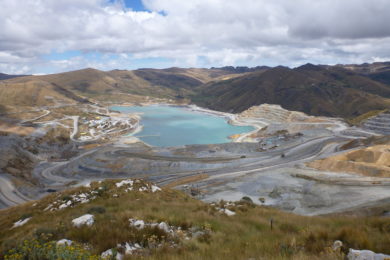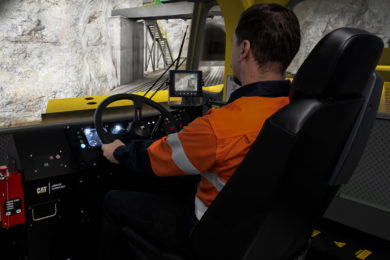Tailings management and the safe construction and operation of tailings dams are challenges that require qualified Engineers of Record (EORs). Identifying, developing, and maintaining qualified EORs requires commitment, innovation, and solutions from the entire mining industry. The EOR is at the forefront of successful tailing management. This critical role is now expected as part of regular governance and the industry is facing an overall lack of appropriately qualified EOR candidates.
In the management and governance section of the Global Industry Standard on Tailings Management (Global Standard), first published in 2020, is Principle 9 (one of 15) which for compliance requires the appointment and empowerment of an Engineer of Record. The Global Standard defines the EOR as: “The qualified engineering firm responsible for confirming that the tailings facility is designed, constructed, and decommissioned with appropriate concern for integrity of the facility, and that it aligns with and meets applicable regulations, statutes, guidelines, codes and standards. The Engineer of Record may delegate responsibility but not accountability.”
It further requires that the firm nominate a senior engineer, approved by the operator, to represent the firm as the EOR, and verify that the individual has the necessary experience, skills and time to fulfil this role. “Alternatively, the operator may appoint an in-house engineer with expertise and experience in comparable facilities as the EOR. In this instance, the EOR may delegate the design to a firm (Designer of Record) but shall remain thoroughly familiar with the design in discharging their responsibilities as EOR. Whether the EOR or the DOR is in-house or external, they must be competent and have experience appropriate to the Consequence Classification and complexity of the tailings facility.”
The operator should also “empower the EOR through a written agreement that clearly describes their authority, role and responsibilities throughout the tailings facility lifecycle, and during change of ownership of mining properties. The written agreement must clearly describe the obligations of the Operator to the EOR, to support the effective performance of the EOR.”
There should be establishment and implementation of “a programme to manage the quality of all engineering work, the interactions between the EOR, the RTFE and the Accountable Executive, and their involvement in the tailings facility lifecycle as necessary to confirm that both the implementation of the design and the design intent are met.”
Given its potential impact on the risks associated with a tailings facility, “the selection of the EOR shall be decided by the Accountable Executive and informed, but not decided, by procurement personnel. Where it becomes necessary to change the EOR (whether a firm or an in- house employee), develop a detailed plan for the comprehensive transfer of data, information, knowledge and experience with the construction procedures and materials.”
IM set out to clarify from Stantec, a leading global supplier of EOR services, exactly what an EOR is and the role it plays in a tailings management system. Editorial Director Paul Moore spoke to Stantec’s Evan Hsiao, Principal and Senior Geotechnical Engineer who is one of those leading the fast-growing EOR business within the company.
Evan Hsiao, Principal and Senior Geotechnical Engineer, Stantec

From your perspective what does EOR mean and what services does it include?
I would say the EOR is a qualified individual who must have a multi-disciplinary support team. Because the EOR and their team are responsible for the design, or detailed review the design, of a tailings facility as well as providing continuous observations during construction/operation phases and even after commissioning, they must have a broad range of experience through the life of a TSF. The EOR has an overarching responsibility to monitor the safety of the TSF. Our services as EOR therefore include design of the TSF, construction assurance and quality control, and detailed inspections. The exact requirements vary from mining company to mining company. Effectively we are serving to closely monitor the health of the entire TSF and make recommendations to improve its safety.
Has the EOR requirement always existed or has become more prominent since the Global Standard publication? Why is Stantec chosen to provide these EOR services over others?
It is definitely becoming more common – clearly the Global Standard has played a big part in that. In terms of Stantec our ability to remain independent given the nature of the work is very important; as is having a large and experienced support team behind the EOR. The mine operator may just have a key account executive and a responsible site engineer. They will manage the scope of the work. When Stantec is chosen to provide EOR services, we expect to build a strong partnership with the client and bring the width and depth of our team’s knowledge to the project. We should remember that TSFs are multi-disciplinary and complex facilities which require a wide range of expertise within the EOR team, including geotechnical, geochemical, hydrogeology, hydrology, and other disciplines.
So you have the mining company but in some cases also a large EPC/EPCM company as well as technical consultants specialising in areas like the tailings transport and disposal method. As the EOR how do you collaborate with these diverse stakeholders?
You could think of us as a bridge to all of these parties – and as such we try to keep the same team in place for as much of the lifetime of a project as we can in order to provide consistency and retain institutional knowledge. We need to know the whole history of the TSF right from the initial design phase because it makes it easier to identify key issues and understand if anything has changed over time. We have regular face to face meetings – generally quarterly but sometimes monthly, and at certain project phases even weekly. These meetings are attended by the EOR, the technical tailings consultant and the responsible tailings engineer, who is a representative from the mining company.
Is it normal for the EOR role to last from feasibility and design stage through to mine closure and beyond?
The ideal scenario is for one EOR to be involved from start to finish. Sometimes there is a change between the feasibility and design phase and the evaluation phase, but there are advantages to keeping the same EOR in place. The EOR can serve as a repository for site knowledge and understand how and why design decisions were made. These projects can last decades, so it is good practice to have a deputy EOR appointed – a qualified substitute who can take over if the main EOR individual becomes unavailable, and to ensure a smooth transition if the appointed individual changes.
How do you as EOR keep on top of local and national regulatory and permitting requirements, as well as updates to global guidelines like the Global Standard?
Since 2018, Stantec has had an EOR community inside our organisation which has a quarterly call to discuss practices and to get to know each other and our global projects better so we can support each other – this includes EORs in different offices and different countries. We generally have over 30 but sometimes up to 50 people taking part in these calls. We often invite some of our major EOR mining clients to join as well. We also have an annual EOR summit to devote time to connecting, knowledge sharing, and strategising our plan for the next year. We also encourage attendance and presenting at technical conferences about tailings management.
When the Global Standard came out in 2020, how did you go about absorbing and interpreting the principles and guidelines it contained?
This is why our community approach to EOR is so important – as you say there are some elements of the Global Standard that can be interpreted in different ways – on the quarterly calls we can talk through uncertainties related to particular wording, and how we can resolve perceived inconsistencies. The perspectives we gain from these informal exchanges and sharing our experiences with the new guidelines are invaluable.
It is not legally binding – with mandatory requirements in most big mining countries falling far short of what the Global Standard would propose. Do you still try to get mining clients to meet the Standard?
At Stantec as an EOR we prioritise safe tailings management. Many larger mining companies have already committed to manage tailings using the Global Standard as their framework. There are other mine operators who have chosen a different approach, but there are other tailings management frameworks commonly used, such as the MAC Guidelines. The bottom line is that we are sharing a key goal with all our clients. That goal is to design, construct, operate, and close TSFs with safety top of mind for the community and environment throughout the entire lifecycle of the project.
What happens in cases where a mining company is acquired and the EOR changes?
Change is inevitable. Like any other transition, it is important to make it as smooth as possible. An EOR transition period is very beneficial to the mine owner to transfer critical documents, knowledge, and other relevant data. This step is well worth it to build continuity and maintain the history of the site. At Stantec, we are implementing digital information management tools, such as GIS-based field data collection, so that key data can be easily tracked, analysed, and shared. This makes onboarding new team members, transitioning to a new owner, or changing an EOR more seamless, so that safe tailings management can remain everyone’s priority.










